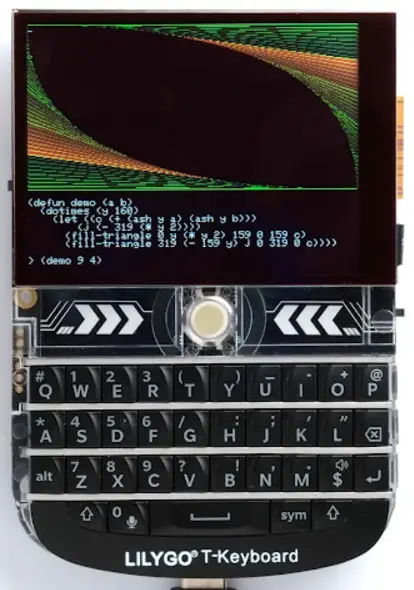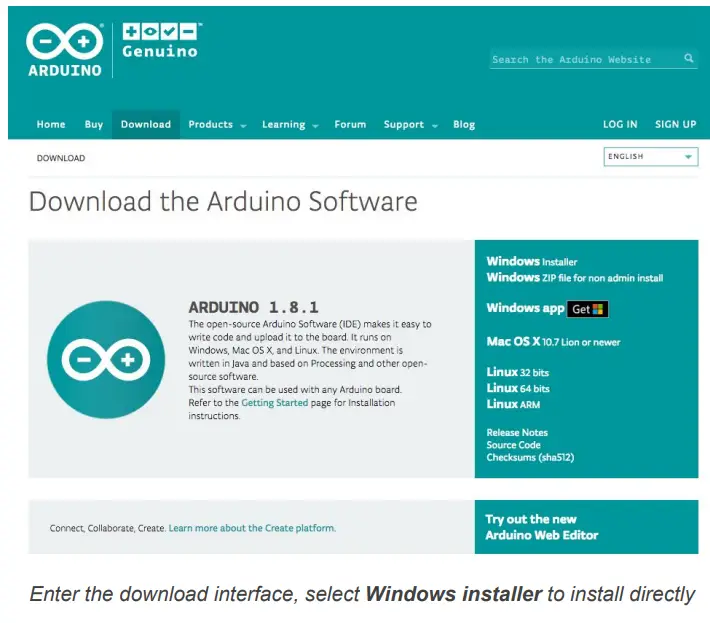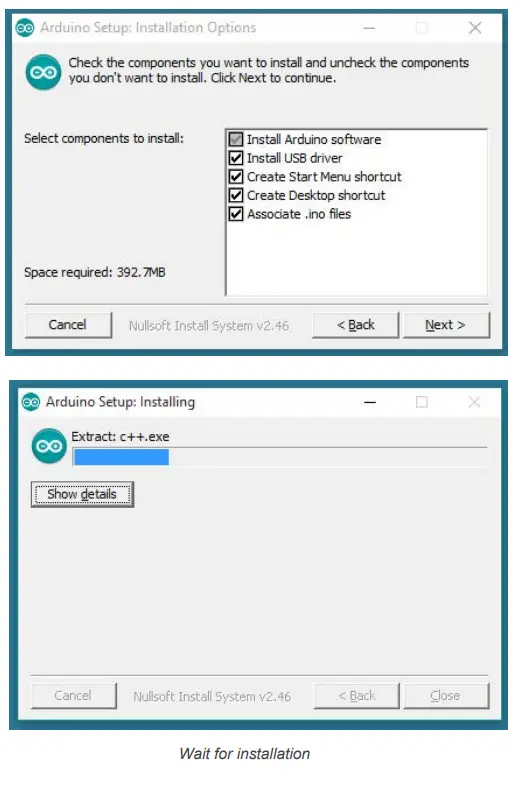LILYGO T-Deck Arduino Software

Product Information
Specifications:
- Product Name: T-Deck
- Version: V1.0
- Release Date: 2024.05
- Hardware: ESP32 module
- Software: Arduino
Product Usage Instructions
Introduction
This guide is designed to assist users in setting up the software development environment for applications using the T-Deck hardware.
- T-Deck
The T-Deck is a hardware platform that supports software development for various applications. - Arduino
Arduino is the software used for programming the T-Deck hardware. - Preparation
Prior to starting, ensure you have the necessary components and tools ready for setting up the environment.
Get Started
Follow the instructions provided in this guide to begin setting up the software development environment.
Configure
Configure the software settings based on your project requirements.
Connect
Establish the connection between the T-Deck hardware and your development system.
Test Demo
Run a test demo to ensure the hardware and software setup is functioning correctly.
Upload Sketch
Upload your Arduino sketch to the ESP32 module using the provided instructions.
- Build and Flash
Compile your Arduino code and flash it to the ESP32 module. - Monitor
Monitor the output and behavior of your sketch on the T-Deck hardware.
SSC Command Reference
Refer to the command references for specific operations related to the T-Deck hardware.
op
Description of operation ‘op’.
FAQ (Frequently Asked Questions)
What should I do if my upload fails?
If your upload fails, check the connection between your development system and the T-Deck hardware. Ensure all settings are correct and try uploading again.
About This Guide
This document is intended to help users set up the basic software development environment for developing applications using hardware based on the T-Deck. Through a simple example, this document illustrates how to use Arduino, including the menu-based configuration wizard, compiling the Arduino and firmware download to the ESP32 module.
Release Notes
| Date | Version | Release notes |
| 2024.05 | V1.0 | First release. |
Introduction
T-Deck
- T-Deck is a development board. It can work independently.
- It consists of ESP32-S3 MCU supporting Wi-Fi + BLE communication protocol and motherboard PCB.
- This product has LCD and LoRa functions. LCD model ST7789 LCD with 320×240 resolution. LoRa chip is SX1262.
- For applications ranging from low-power sensor networks to the most demanding tasks.
- At the core of this module is the ESP32S3 chip.
- ESP32-S3 integrates Wi-Fi (2.4 GHz band) and Bluetooth 5.0 solutions on a single chip, along with dual high-performance cores and many other versatile peripherals. ESP32 provides a robust, highly integrated platform to meet the continuous demands for efficient power usage, compact design, and security.
- Xinyuan provides the basic hardware and software resources that empower application developers to build their ideas around the ESP32-S3 series hardware. The software development framework provided by Xinyuan is intended for rapidly developing Internet-of-Things (IoT) applications, with Wi-Fi, Bluetooth, flexible power management, and other advanced system features.
- The manufacturer is Shenzhen Xin Yuan Electronic Technology Co., Ltd.
Arduino
A set of cross-platform applications written in Java. The Arduino Software IDE is derived from the Processing programming language and the integrated development environment of the Wiring program. Users can develop applications in Windows/Linux/MacOS based on Arduino. It is recommended to use Windows 10. Windows OS has been used as an example in this document for illustration purposes.
Preparation
To develop applications for ESP32-S3 you need:
- PC loaded with either Windows, Linux, or Mac operating system
- Toolchain to build the Application for ESP32-S3
- Arduino essentially contains API for ESP32-S3 and scripts to operate the Toolchain
- CH9102 serial port driver
- The ESP32-S3 board itself and a USB cable to connect it to the PC
Get Started
Download the Arduino Software
The quickest how to install the Arduino Software (IDE) on Windows machines
Quick Start Guide
The website provides a quick start tutorial
- Windows:
https://www.arduino.cc/en/Guide/Windows - Linux:
https://www.arduino.cc/en/Guide/Linux - Mac OS X:
https://www.arduino.cc/en/Guide/MacOSX
Installation steps for Windows platform Arduino

Install the Arduino Software

Configure
Download Git
Download the installation package Git.exe

Pre-build configuration
- Click Arduino icon, then right click and select “Open folder where “
- Select hardware ->
- Mouse ** Right click ** ->
- Click Git Bash Here
Cloning a remote repository
- mkdir espressif
- cd espressif
- git clone –recursive https://github.com/espressif/arduino-esp32.gitesp32
Connect
You are almost there. To be able to proceed further, connect ESP32-S3 board to PC, check under what serial port the board is visible and verify if serial communication works.
Test Demo
Select File>>Example>>WiFi>>WiFiScan

Upload Sketch
Select Board
Tools<<Board<<ESP32S3 Dev Module
Upload
Sketch << Upload
Serial Monitor
Tools << Serial Monitor

SSC Command Reference
Here lists some common Wi-Fi commands for you to test the module.
op
- Description
op commands are used to set and query the Wi-Fi mode of the system. - Example

- Parameter
-Q Query Wi-Fi mode. -S Set Wi-Fi mode. wmode
There are 3 Wi-Fi modes: • mode = 1: STA mode
• mode = 2: AP mode
• mode = 3: STA+AP mode
sta
- Description
sta commands are used to scan the STA network interface, connect or disconnect AP, and query the connecting status of STA network interface. - Example

- Parameter
-s ssid Scan or connect Access Points with the ssid. -b bssid Scan the Access Points with the bssid. -n channel Scan the channel. -h Show scan results with hidden ssid Access Points. -Q Show STA connect stutus. -D Disconnected with current Access Points.
ap
- Description
ap commands are used to set the parameter of AP network interface. - Example

- Parameter
-S Set AP mode. -s ssid Set AP ssid. -p password Set AP password. -t encrypt Set AP encrypt mode. -h Hide ssid. -m max_sta Set AP max connections. -Q Show AP parameters. -L Show MAC Address and IP Address of the connected station.
mac
- Description
mac commands are used to query the MAC address of the network interface. - Example

- Parameter
-Q Show MAC address. -o mode
• mode = 1: MAC address in STA mode. • mode = 2: MAC address in AP mode.
dhcp
- Description
dhcp commands are used to enable or disable dhcp server/client. - Example

- Parameter
-S Start DHCP (Client/Server). -E End DHCP (Client/Server). -Q show DHCP status. -o mode
• mode = 1 : DHCP client of STA interface. • mode = 2 : DHCP server of AP interface.
• mode = 3 : both.
ip
- Description
ip command are used to set and query the IP address of the network interface. - Example

- Parameter
-Q Show IP address. -o mode
• mode = 1 : IP address of interface STA. • mode = 2 : IP address of interface AP.
• mode = 3 : both
-S Set IP address. -i ip IP address. -m mask Subnet address mask. -g gateway Default gateway.
reboot
- Description
reboot command is used to reboot the board. - Example

ram
ram command is used to query the size of the remaining heap in the system.
Example
![]()
FCC Caution
Any Changes or modifications not expressly approved by the party responsible for compliance could void the user’s authority to operate the equipment.
This device complies with part 15 of the FCC Rules. Operation is subject to the following two conditions:
- This device may not cause harmful interference
- this device must accept any interference received, including interference that may cause undesired operation.
IMPORTANT NOTE:
Note: This equipment has been tested and found to comply with the limits for a Class B digital device, under part 15 of the FCC Rules. These limits are designed to provide reasonable protection against harmful interference in a residential installation. This equipment generates, uses, and can radiate radio frequency energy and, if not installed and used by the instructions, may cause harmful interference to radio communications. However, there is no guarantee that interference will not occur in a particular installation. If this equipment does cause harmful interference to radio or television reception, which can be determined by turning the equipment off and on, the user is encouraged to try to correct the interference by one or more of the following measures:
- Reorient or relocate the receiving antenna.
- Increase the separation between the equipment and the receiver.
- Connect the equipment to an outlet on a circuit different from that to which the receiver is connected.
- Consult the dealer or an experienced radio/TV technician for help.
FCC Radiation Exposure Statement:
This equipment complies with FCC radiation exposure limits set forth for an uncontrolled environment.
Documents / Resources
 |
LILYGO T-Deck Arduino Software [pdf] User Guide T-DECK, TDECK, 2ASYE-T-DECK, 2ASYETDECK, T-Deck Arduino Software, Arduino Software, Software |



